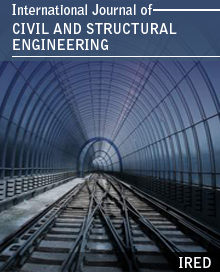Risk Level Assessment On Road Construction’s Contractors Using Cultural – Professionalism Based Approach
Author(s) : BASYAR BUSTAN, ISRAN RAMLI, LAWALENNA SAMMANG, NURALI
 Abstract
Abstract
This study is aimed to analyze the characteristics of potential risk, risk level, risk response and design a risk assessment models with multi-criteria on a road construction project. This study is done in the form of a survey by capturing the opinions or perceptions, experiences and attitudes of respondents implementing on road construction. Variables and indicators that are expected affecting the risk of road construction projects were modeled and tested using the methodology of Expert Choise to describe, quantify and demonstrate the level, allocation, and risk response on road construction projects with different risk variables. Results of the study, the first is the amount of the risk identified for the construction of the road as much as 281 risks and were grouped into aspect of non-technical 57, technical aspect 39, financial aspect 36, the cultural aspect of the construction 76, aspect of health and safety management 38 and environmental aspect 35. The second is the weight of importance of objective indicators on the risk of road construction works, namely cost 0.370, time 0.252, quality 0.184, Health and safety management 0.120, and environmental 0,074. Weight of objective risk criteria of cost, to the risk of non-technical aspects 0,113, technical aspect 0.247, financial aspect 0.185, cultural aspect of construction 0.304, health and safety management aspect 0.083 and environmental aspect 0.068. The third is the risk map, the extreme risk was 116 or 41.28%, high risk was 153 or 54.45%, medium risk was 12 or 4.27%, and low risk was none. The fourth is the allocation of risk to the contractor was 53.19 or 55.88%, share was 22.30 or 23.58% and the owner was 19.52 or 20.55%.The fifth is an alternative strategy for handling the response risks road construction projects that risk retention as much as 36.03 or 38.73%, risk reduction as much as 19.82 or 19.01%, risk avoidance as much as 26.47 or 28.13%, and risk transfer as much as 16.90 or 15.17%.

About Journals
- ISSN No. : 2372-3971
- Editor Chief : Dr. Cristina Gentilini, Alma mater Studiorum - University of Bologna, Italy
- Related Subjects : Corrosion Of Reinforcement In HVFA Concrete, Advanced Construction Materials : Microsilica In Concrete, Oceans as a Non-conventional Source of Energy, Silica Fume Concrete
 Full Paper PDF
Full Paper PDF